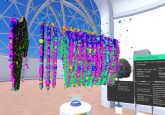Blocking out the background noise: how our brains focus in on important sonic information

Researchers uncover the neural pathways in mouse brains that allow them to ignore the sound of their own footsteps, indicating processes by which we develop speech and musical ability.

Research conducted at Duke University’s School of Medicine (NC, USA) has discovered the processes required in mice to block out the sound of their own footsteps; information that lead author David Schneider (NYU; NY, USA) and his colleagues believe can be extrapolated and used to explain how humans learn more complex behaviors, such as speech and music.
Using a newly developed ‘acoustic virtual reality system’ the researchers monitored the brain function of the mice on a treadmill, whilst controlling the sounds that the mice made. This allowed them to observe the neural pathways that identify and sequester movement-related sounds in a ‘sensory filter’, enabling the mice to focus on more important environmental sounds. “The capacity to anticipate and discriminate these movement-related sounds from environmental sounds is critical to normal hearing,” detailed Schneider.
In more intricate human behaviors, such as speech and playing music, the ability to anticipate the sound created as a result of our actions is vital. For instance, as Schneider explained, “when we learn to speak or to play music, we predict what sounds we’re going to hear—such as when we prepare to strike keys on a piano—and we compare this to what we actually hear.”
The comparison between these expected and actual sounds allows us to learn and change the sounds that we create to match those that we expect. This therefore helps us to improve over time as our brain aims to reduce these differences.
These learning processes have been associated with interactive disorders and mental health issues. “Overactive prediction circuits in the brain are thought to lead to the voice-like hallucinations associated with schizophrenia while an inability to learn the consequences of one’s actions could lead to debilitating social paralysis, as in autism,” explained Schneider.
Therefore, the identification of the neural pathways that are involved in these sonic predictions and the resulting learning processes could be incredibly valuable in identifying how the brain breaks during disease and possibly finding solutions to these problems.





